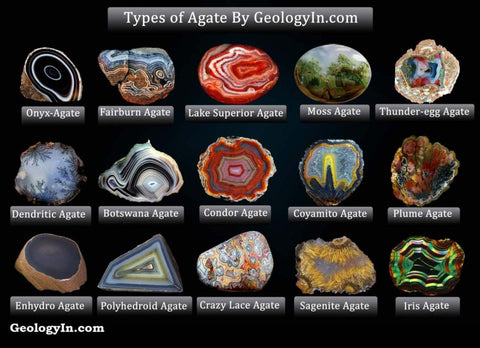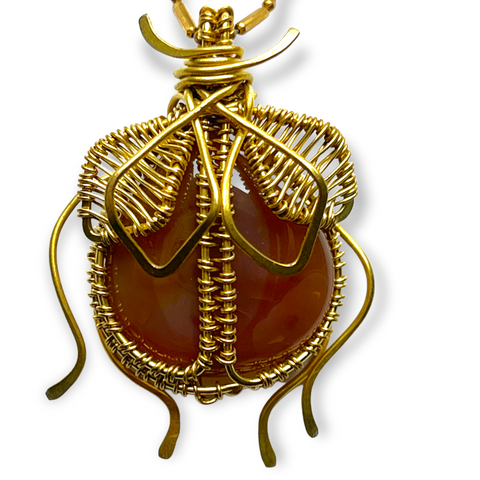
Agate - An Ancient Gemstone with Diverse Beauty
1 min reading time

1 min reading time
Agate is one of the earliest recognized gemstones to be used in jewelry and decorative arts. It is easy to see given its diverse colors and patterns. It is a worthy addition to any piece of jewelry both for beauty and hardness.
When you think of stones, its often easiest to put them in separate buckets, but the amount of overlap between gemstones is sometimes remarkable. Take agate, for example, it is chalcedony which in turn is a member of the quartz family. It differentiates itself from chalcedony with its moss like inclusions, patterns, and translucency.

Chart courtesy of GeologyIn.com
Since ancient times, agate’s beauty has been recognized as it has been incorporated into jewelry – it takes its name from the Achates River in Sicily where it was first reported. It is justly famous for its multicolored banded formation. Indeed, it is one of the oldest gemstones to be incorporated into jewelry. Agate comes in a wide variety of colors from black, green, blue, red, white, yellow, pink, purple, grey, brown, and orange.

Hardness
Agates score high on the upper end of the hardness category (7 on a scale of 1 to 10) as they are formed within volcanic and metamorphic rocks.
Care
Clean agates with warm, soapy water. Avoid contact with other gemstones because while agate is hard, it can still be scratched if it encounters an even harder gemstone. It is also best to avoid household cleaning products and chemicals.
Meaning / Symbolism
Agate is thought to improve mental function, enhance concentration, perception, and analytical abilities, making it the perfect stone for students. It is also considered an excellent stone to rebalance and harmonize the body, mind and spirit.
Birthstone Month: May
If you are curious for more information, please check out:
The mineral agate, information and pictures from minerals.net
International Gem Society write up on agate
Detailed overview of agate from GeologyIn.com